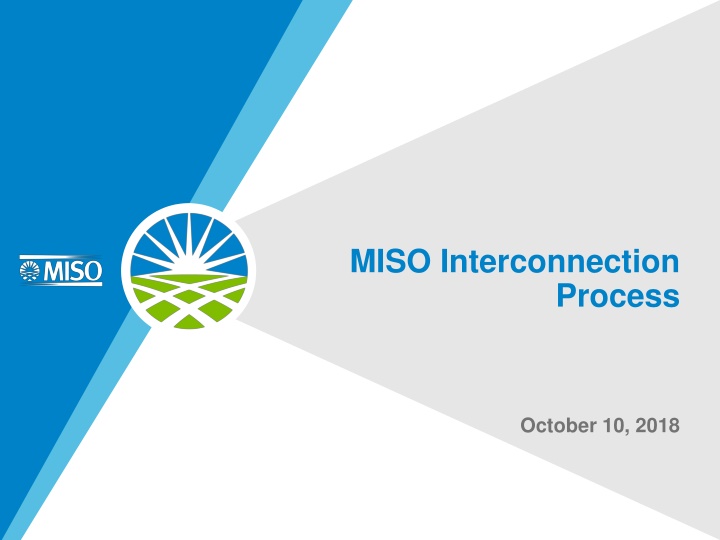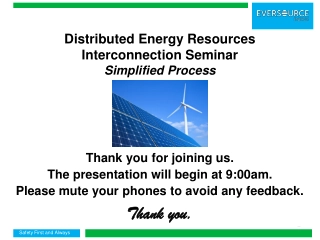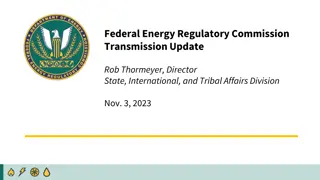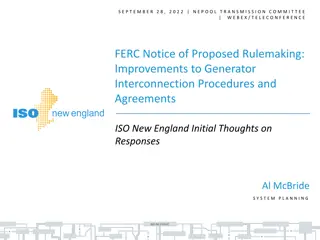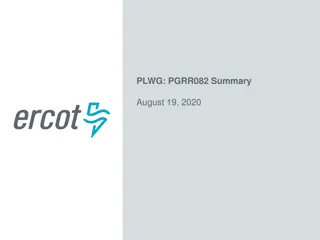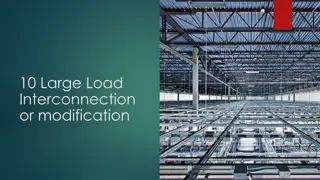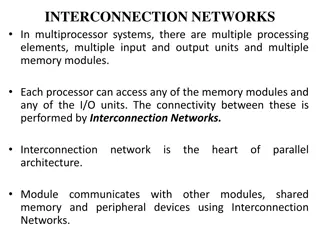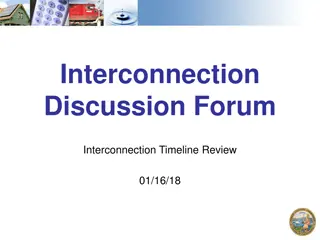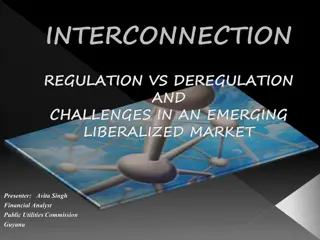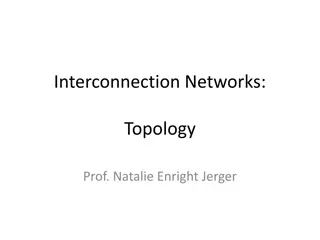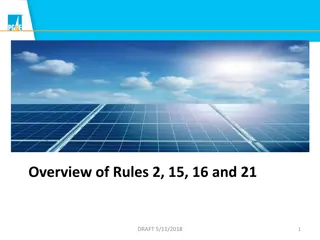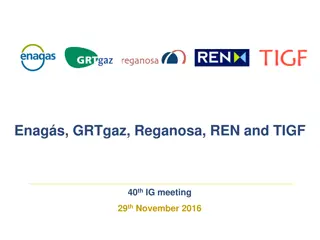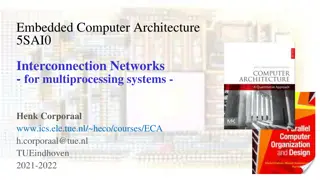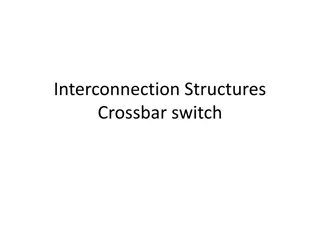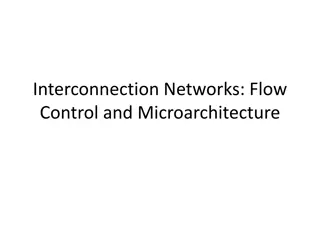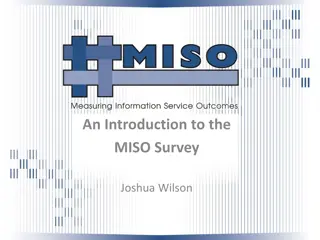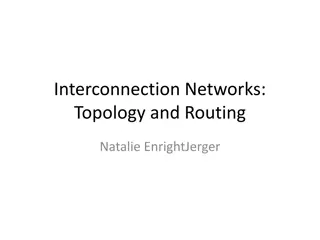Evolution of MISO Interconnection Process: Enhancing Certainty and Efficiency
The MISO Interconnection Process has evolved over the years, reflecting improved certainty and efficiency. From historical trends to current statistics, the process highlights challenges, adjustments, and next steps to address issues like project dropouts, uncertainty in timing and costs, and entry requirements. The implementation of decision points, cash at risk milestones, and controlled restudy processes contribute to increased certainty in the interconnection timeline.
Download Presentation

Please find below an Image/Link to download the presentation.
The content on the website is provided AS IS for your information and personal use only. It may not be sold, licensed, or shared on other websites without obtaining consent from the author.If you encounter any issues during the download, it is possible that the publisher has removed the file from their server.
You are allowed to download the files provided on this website for personal or commercial use, subject to the condition that they are used lawfully. All files are the property of their respective owners.
The content on the website is provided AS IS for your information and personal use only. It may not be sold, licensed, or shared on other websites without obtaining consent from the author.
E N D
Presentation Transcript
MISO Interconnection Process October 10, 2018
Outline MISO s Interconnection queue process evolution 2017 queue reform highlights MISO queue historic trends and current queue statistics Challenges and next steps 2
MISO interconnection queue process evolution Pre- 2008 2008- 2012 2012- 2016 2017 Onward First Ready First Served (Cash at Risk + off- ramps) First Ready First Served (Cash at risk) First Ready First Served First in First Out Reduced impact of project dropouts, was still painful. Increased flexibility and certainty for projects Project dropouts extremely painful Reduced the number of ready projects in queue Uncertainty due to restudies still existed, but less compared to older process Entry requirements need to be addressed; Late stage withdrawals reduced but still exist Tremendous uncertainty in timing of studies and costs Reduced the uncertainty in timing and costs. 3
MISOs Generator Interconnection Process Implemented January 2017 Decision Point 1 Pay M3 Decision Point 2 Pay M4 Enter Queue Satisfy M1 Pay M2 DPP1 (140 Days) DPP2 (80 Days) Pre-Queue DPP3 (135 Days) GIA (150 Days) Projects accepted to the queue but not yet started Revised system impact study Final system impact study System impact study completed providing preliminary cost estimates for network upgrades Negotiate and execute GIA Interconnection facilities studies Applications are due 45 days prior to the start of a DPP Cycle Network upgrade facilities studies As projects progress, higher certainty of interconnection costs is achieved. Milestone Calculation Decision Points Description M1 Technical Data + Site Control Requirements DP1 Projects may elect to reduce project MW size up to 100% (withdrawal) M2 $4,000 per MW DP2 Projects may elect to reduce project MW size up to 10% or withdraw M3 (10% of Network Upgrades) M2 M4 (20% of Network Upgrades) M3 M2
Adjustments to the new queue process contribute to increased certainty of the interconnection timeline A controlled restudy process Three System Impact Studies Allows for the implementation of decision points Scheduled Restudies Increased Certainty Two defined decision points or off-ramps Withdrawals receive refund of previous milestone Option to reduce MW Defined Decision Points Two new cash at risk milestones Percentage of identified upgrade costs Increase commitment levels Milestone payments 5
MISO Queue: Historic Trends Requested Generation (MW) by Queue Date 50,000 46,720 PTC Phase out established for 2020 Solar ITC phase out established for 2022 Production Tax Credit (PTC) Extensions 45,000 41,239 40,000 35,000 31,615 29,879 28,151 30,000 24,947 22,843 25,000 20,772 20,000 15,733 15,136 15,000 12,099 11,733 10,116 10,765 10,879 9,493 8,132 7,796 10,000 6,708 5,000 - 2000 2001 2002 2003 2004 2005 2006 2007 2008 2009 2010 2011 2012 2013 2014 2015 2016 2017 2018 Nuclear Coal Natural Gas Wind Solar Hydro Other Executed Projects 1999 2008 2012 Henry Hub Gas $2.27/mmbtu Henry Hub Gas $8.86/mmbtu Henry Hub Gas $2.75/mmbtu 6 Chart values per MISO s interconnection queue database (by date processed into the queue).
Expiring federal PTC/ITC deadlines are driving record levels of projects in the queue with most of the project development happening in parallel, not before entering the queue The current generator interconnection queue consists of 531 projects totaling 89.1 GW Updated: Sep 2018 MISO Active Queue by Study Area DPP Trends Active and Completed Projects by DPP Year (GW) East Area (ATC/UP) 45.0 Size: 6.7 GW Requests: 46 40.4 40.0 34.3 35.0 East Area (ITC) 30.0 Size: 13.5 GW Requests: 74 25.0 20.0 17.3 West Area 15.0 Size: 32.1 GW Requests: 197 9.2 10.0 6.1 5.0 Central Area Size: 21.5 GW Requests: 116 - 2014 2015 2016 2017 2018 Total Queue: 89.3 GW Notes: South Area The queue size grew by 239 projects and 40.7 GW with the addition of DPP-2018-APR queue cycle. Size: 15.5 GW Requests: 98 10.5 Detailed queue cycle information can be found on the MISO s website 35.7 42.4 Fuel Type Legend For the latest information on the Interconnection Process Task Force (IPTF) visit MISO s website Solar Gas Other Wind 7 Source: MISO Transmission Planning Department
Interconnection Projects in Illinois Active in MISO Queue Interconnection Requests (MW) in Illinois by Fuel Type 1393 Gas 4190 Solar Wind 3211 DPP Interconnection Projects (MW) by Fuel Type and Request Year No. of DPP Interconnection Projects by Fuel Type and Request Year 8
MISO Queue Challenges and Next Steps Impact of Federal PTC and ITC on the MISO Interconnection queue Baseload Generation Retirements impact on the queue Resource Adequacy Implications Process improvements to expedite queue processing Significant Transmission Investment needed to integrate queue volume Affected Systems Coordination 9
MISO is managing 14 ongoing queue cycles with 10 more to set to start in the next 12 months 11
